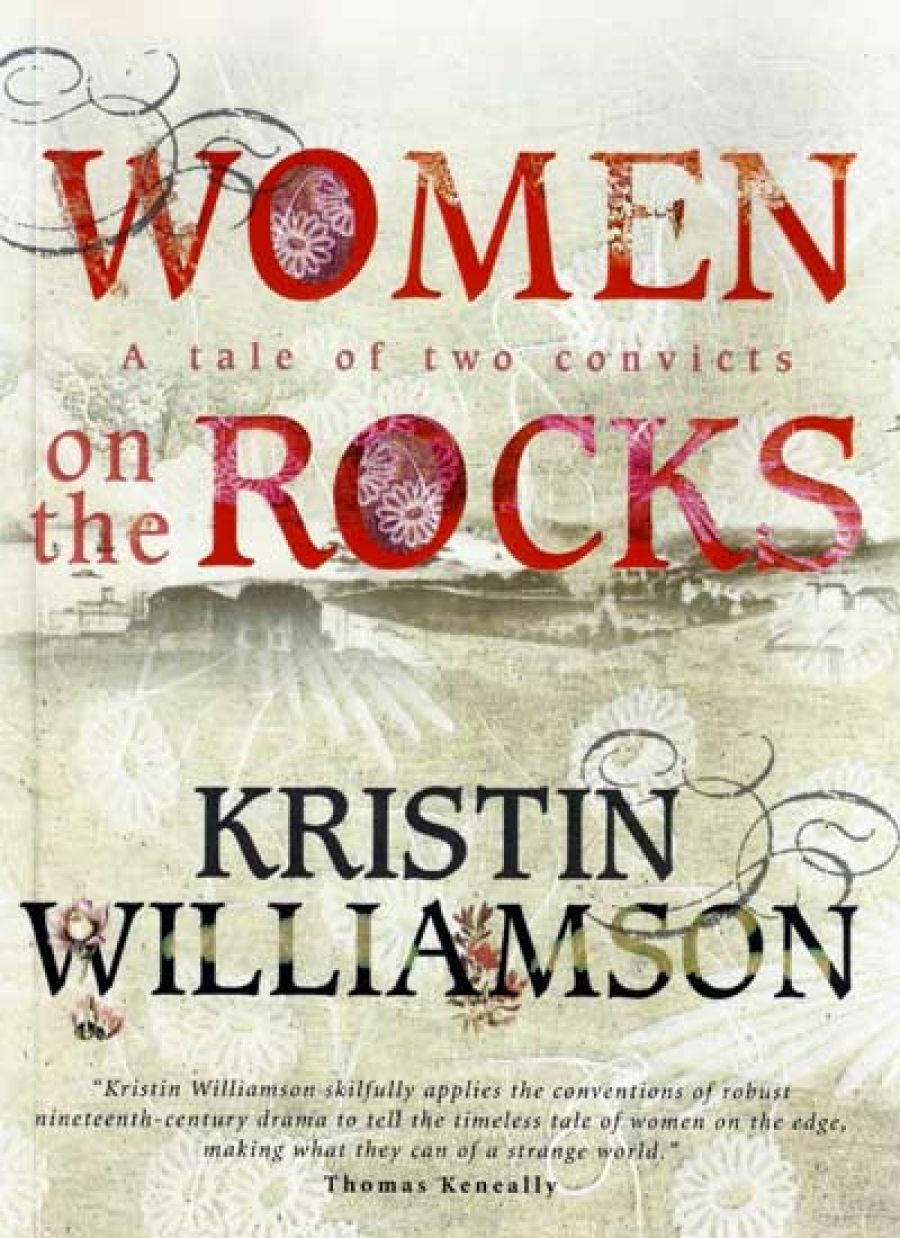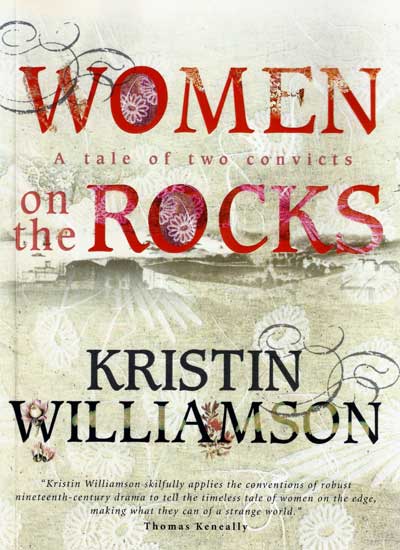
- Free Article: No
- Contents Category: Fiction
- Review Article: Yes
- Article Title: Feisty Times
- Online Only: No
- Custom Highlight Text:
Early Sydney has beguiled many writers, and the latest to succumb is Kristin Williamson. She has combined an interest in the Rocks area with a self-confessed ‘obsession with our feisty female forebears’, and has produced an historical novel involving several real people.
- Book 1 Title: Women on the Rocks
- Book 1 Subtitle: A tale of two convicts
- Book 1 Biblio: UQP, $29.95 pb, 396 pp
- Book 1 Cover Small (400 x 600):

- Book 1 Cover (800 x 1200):

The real Mary Jones was transported to Sydney in 1820 for forging banknotes – surely an unlikely crime for a fourteen-year-old. Jane New, born Maria Wilkinson, was transported to Hobart in 1824 for receiving. Kristin Williamson has constructed a story around the facts on the historical record, which she sets out in an afterword. (She does not remark on one incidental connection that I found interesting: the villainous John Knatchbull was the brother of Sir Edward Knatchbull, husband of Jane Austen’s favourite niece, Fanny.)
In Williamson’s version of history, transportation was not the worst fate that could befall a healthy, enterprising young person in the Georgian world. Williamson has plausibly given both her heroines a degree of autonomy and prosperity that would have been unlikely if they had stayed in England.
Much of what is known about convicts was recorded when they came to the notice of the authorities, which is to say when they broke the law. Mary Jones seems to have been reasonably well-behaved, and so less is known about her than Jane New, who was sentenced to death for stealing in New South Wales. The sentence was overturned, but she was kept in custody and escaped nobody knows where. These scraps of fact are a gift for the novelist, and Williamson has imagined a romantic life for Jane in New Zealand, consorting with Maori chiefs and trading on the lawless fringes of settler society.
Williamson’s Mary Jones is more staid. The two girls meet as servants in an English country house. Mary is young and impressionable, Maria/Jane a little older, ambitious, unscrupulous and fascinating – Amelia Sedley and Becky Sharp. Mary is convicted wrongly, of course, loyally taking the blame for a crime committed by Jane. Her good behaviour in Sydney earns her a thriving dressmaking business and, eventually, the love of a respectable gentleman.
Unfortunately, Mary fails to gel as a character. Honest and worthy, with a tendency to cliché in her speech and attitudes, she nevertheless wholeheartedly admires her treacherous friend’s criminal behaviour despite the trouble it gets her into more than once. This inconsistency, which could have been an interesting facet of a rounded character, merely seems puzzling. Mary’s passions rarely come alive. We are told about them often enough, but the narrative fades away when her emotions become intense, and we never have a vivid sense of what it actually felt like to be Mary Jones, ex-convict and seamstress in colonial Sydney.
The narrative is, at least in the beginning, loosely imagined as the diary of Mary Jones. Each chapter is headed with a time, place and quasi-nineteenth century chapter heading such as ‘Maria Spies on Two Gentlemen and Makes a Nasty Discovery, Elmtree House, August, 1819’, or ‘I Receive a Great Shock, Sydney, March, 1823’. Williamson has carefully made Mary literate, although she has not built into the novel any opportunity for Mary to write her day-by-day narrative: it is only a rhetorical device. Jane is illiterate and determined not to waste her time learning to write, so one of the trickiest problems Williamson has is the mechanical one of telling Jane’s story while she is away from Mary, as she is for most of the novel. She solves it rather clumsily: Jane writes letters to Mary by dictating them to various admirers and acquaintances. The device is transparent. The letters are long and frank and patently unlikely to have been written this way. As the novel goes on, the pretence of dictation is quietly dispensed with, although Jane does not learn to write.
Both these narrative devices are half-hearted, so why bother with them? Mary Jones is not an interesting and perceptive narrator, and it is not clear why Williamson neither chose the more dashing Jane as first-person narrator – plenty of scope there for narrative irony à la Jane Austen’s Lady Susan – nor used the third person, which would have allowed her to spend as long with each heroine as she needed. The prose is on the whole competent and suitable to the period, with only a couple of anachronisms: the word ‘feisty’ is a late nineteenth-century American word unlikely to have been known in early Sydney, for example. This book works well as a portrayal of a chaotic but vibrant society free of the rigid class structures of the home country, but Women on the Rocks, for all its virtues, is a little too long, and the total effect is rather anodyne.


Comments powered by CComment